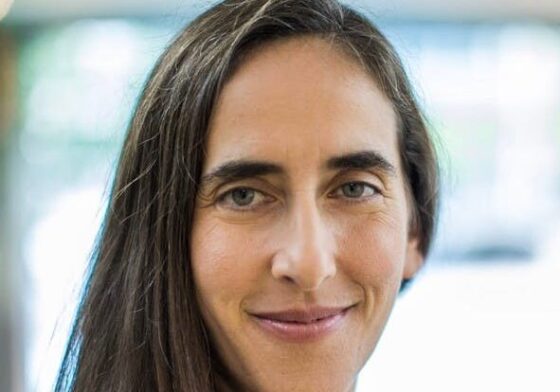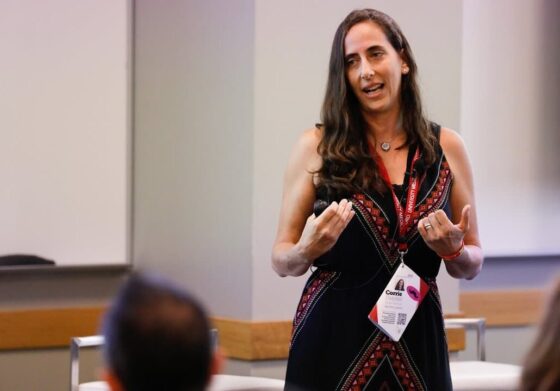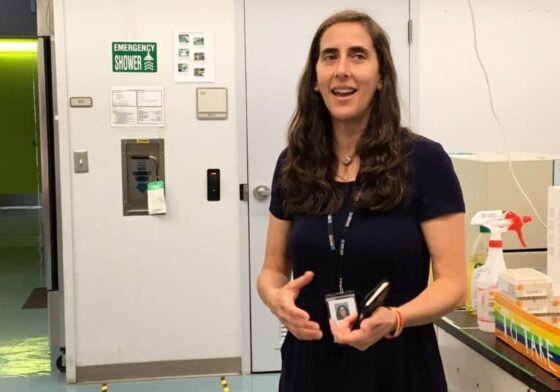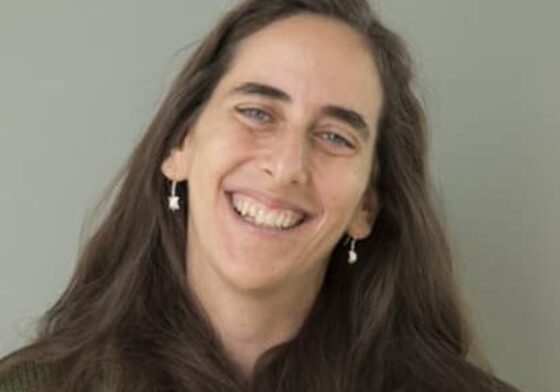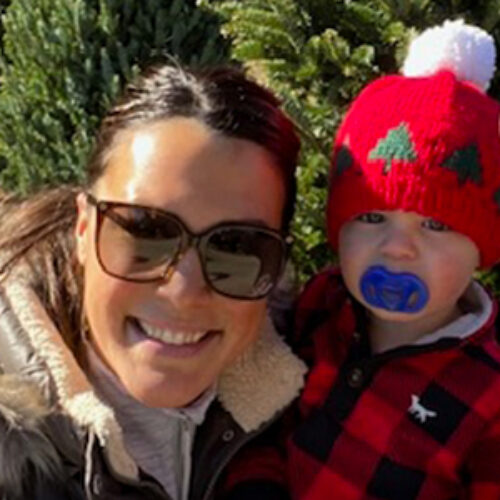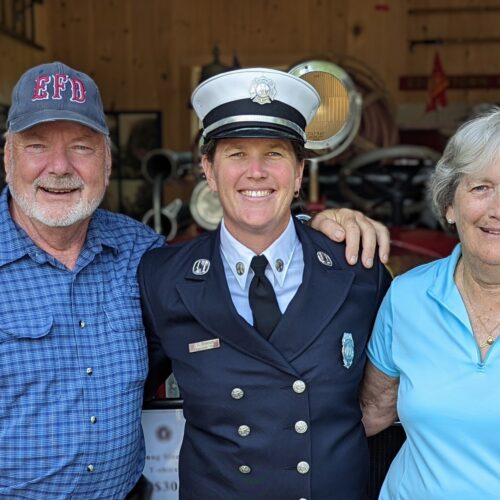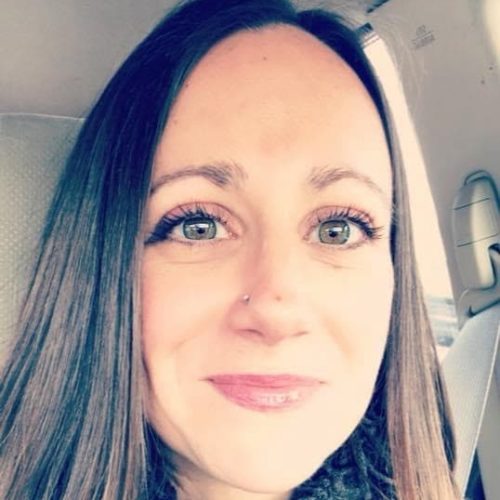At age 36, I felt like the luckiest person in the world. I was finishing up my PhD in biochemistry, had a wonderful family, and was training for my third marathon. I was on a trajectory for a great life, but that all seemed to change in an instant.
I was lying in bed one night doing a self-breast exam and felt a golf ball sized lump in my right breast. I was shocked because I had always been vigilant about doing self-breast exams. It was only two weeks after my last self-exam, and I knew this lump had not been there, so I was extremely concerned that something had grown that quickly. I immediately looked up the symptoms of breast cancer, and was relieved to read that normally a lump for breast cancer doesn’t move when it’s touched, and mine moved. I was convinced that my lump was benign (non-cancerous), but I still scheduled an appointment with my doctor to have it checked out.
I saw an OB/GYN who scheduled a mammogram and sonogram for three weeks after my visit. Both tests turned out negative for cancer, which was a huge relief. But a few weeks after that appointment, I received a letter for a follow up appointment with a surgical oncologist. To this day I don’t know why I got that letter, but I decided to go anyway, because I felt that whatever this lump was should be examined again since it was not going away. If I hadn’t gone to the appointment, I would have been dead long ago.
“Since my cancer diagnosis, I’ve learned to never take chances with your health. I’ve realized that even if you are young and feel healthy you can still have cancer.”
At the surgical oncologist’s office, the doctor felt the lump and decided to do a fine-needle aspiration. When he stuck the needle in the lump, it started bleeding. Being a scientist, I knew a little bit about how aspirations worked, and I knew that if the lump was benign it would not have much blood; this was not a good sign.
After the aspiration, the doctor sent the blood to be tested. The results showed that I had a type of sarcoma and a pathologist diagnosed me with angiosarcoma, which is a cancer of the lining of the blood vessels that can start anywhere in your body. Only about 300 people a year are diagnosed with angiosarcoma, so it is incredibly rare. Because of this, the doctor decided to perform a core needle biopsy, and then sent me – and the biopsy results—to a cancer center in Boston.
There, they performed 9 more core needle biopsies and changed my diagnosis to atypical vascular proliferation. However, after a lumpectomy the doctors realized that they had misdiagnosed me, so I was re-diagnosed me with a 3CM intermediate grade angiosarcoma. Two weeks later I had a radical mastectomy followed by chemotherapy.
Since my cancer diagnosis, I’ve learned to never take chances with your health. I’ve realized that even if you are young and feel healthy you can still have cancer. Cancer strikes some of us despite our efforts to live healthy lives. Furthermore, symptoms may seem benign, and your healthcare provider may not push to have you fully evaluated, so YOU need to be your best advocate to ensure that if there’s a problem, you detect it early.
Symptom
- no early symptoms; found lump during self-exam
